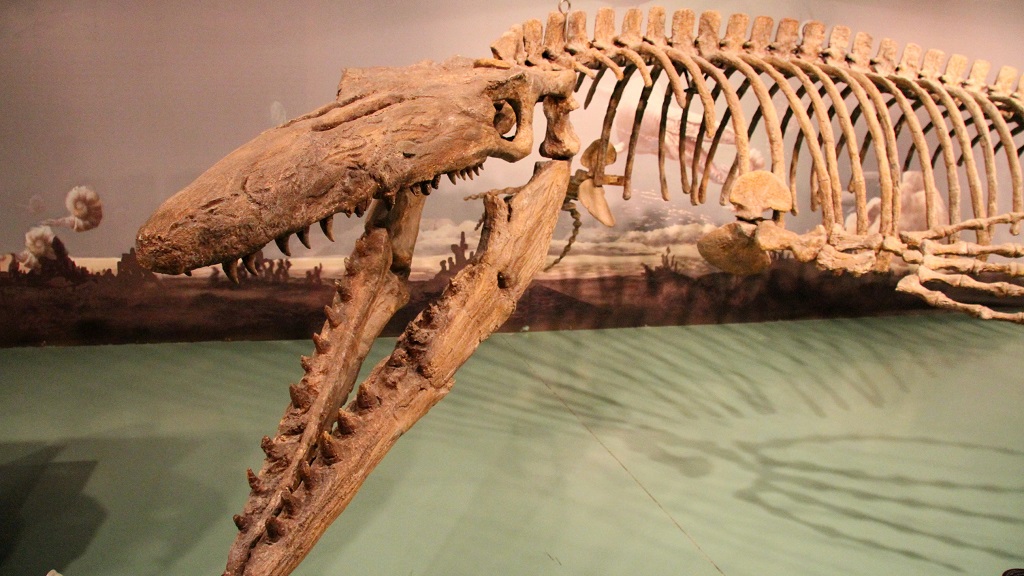University of Cincinnati Associate Professor Takuya Konishi and international colleagues have classified a reptile whose remains were found in Japan 17 years ago as a new species.
The specimen happens to be the most complete skeleton of a mosasaur found in Japan or the northwestern Pacific. Mosasaurs were large aquatic reptiles about the size of great white sharks from the Cretaceous period in the late Mesozoic Era that terrorized oceans 100 to 66 million years ago.
After classifying the discovery under the Mosasaurinae subfamily, the researchers identified it as the Megapterygius wakayamaensis. Megapterygius means “large flippers.”
Based on the shape of its spine, the researchers also believe that the Wakayama Soryu had a dorsal fin — another distinctive feature. They noted that it was similar to that of a harbor porpoise.
Why it matters: Konishi, who has studied mosasaurs for more than 15 years, said the discovery has opened “a whole can of worms” that challenges experts’ understanding on how the prehistoric reptiles swim.
“I thought I knew them quite well by now,” Konishi added. “Immediately it was something I had never seen before.”
Read the full article here





